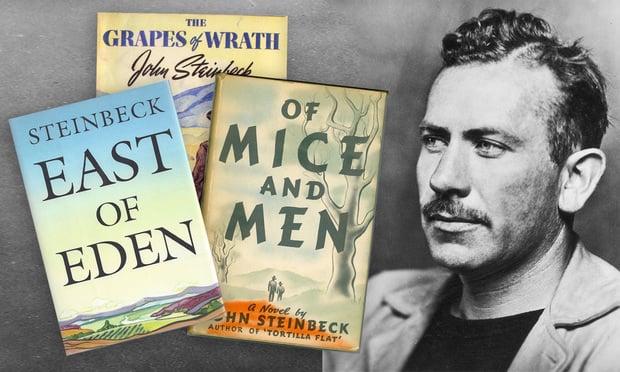Recently I have been reading some works by American Classic author, John Steinbeck. I remember reading three of his works in high school, “Cannery Row”, “Of Mice and Men” and “The Pearl”. All stories that I enjoyed, since then I have gone back to read both “Of Mice and Men” and “The Pearl”, and look forward to reading “The Grapes of Wrath”. In one of my college classes I had to revisit these works and write a paper on Steinbeck's writing style. So let's discuss what make Steinbeck's work a staple of classic American literature.
First, I really do love “Of Mice and Men”, it's a great short read that focuses on two main characters and their struggles during the 1930's. Steinbeck was known for writing about the Great Depression, a time in America where unemployment rates were high, and people struggled to make ends meet. During his time Steinbeck's work connected with readers through the use of his writing style.
Through the use of scenery, dialogue and clear syntax, Steinbeck created works that felt real to his audience. His style of writing incorporates straightforward language which makes his stories easy to read. Steinbeck's use of imagery immerses readers into the settings, and the dialogue is usually authentic to the who the characters are as a person. Often using slang words. His language captures the spirit and plight of the characters in the settings of his stories. Steinbeck did not glamorize or fantasize the human struggles of the Great Depression during the 1930's. Steinbeck has always been concerned about his characters as human beings, men who have desires and wants, which he shows through his choice of words (McElrath, Crisler and Shillinglaw, pp. 78-79).
John Steinbeck gained popularity with a trilogy of books that focused heavily on the labor crisis that plagued people during the Great Depression. The “labor” trilogy of books consist of “Tortilla Flat”, “Of Mice and Men”, and “The Grapes of Wrath”. While his book “Tortilla Flat” may have garnered Steinbeck critical acclaim, it wasn't until “The Grapes of Wrath” that he became a major American novelist. Inspired by growing up in the Salinas Valley of California, Steinbeck uses nature in unique and symbolic ways to build his stories. Even “Cannery Row” was set during the Great Depression, though it was written in the 1940's. I enjoy reading Steinbeck much for the same reason as I enjoy reading F. Scott Fitzgerald, his writing transports me back to a time in America that I find to be fascinating.
While I can't particularly relate to the crisis that George and Lenny face in “Of Mice and Men”, I can relate to the journey of finding your place in this world. Like Fitzgerald, a big theme of Steinbeck is the “American Dream”. In “The Grapes of Wrath” the Joad family has to leave behind their hometown in hopes that they can make a new life for themselves in California. A theme in Steinbeck's work is people being optimistic about their futures, even though the stories may not have a happy ending.
Works Cited
McElrath Jr, Joseph R., Jesse S. Crisler, and Susan Shillinglaw, eds. John Steinbeck: the contemporary reviews. Vol. 8. Cambridge University Press, 2009.




